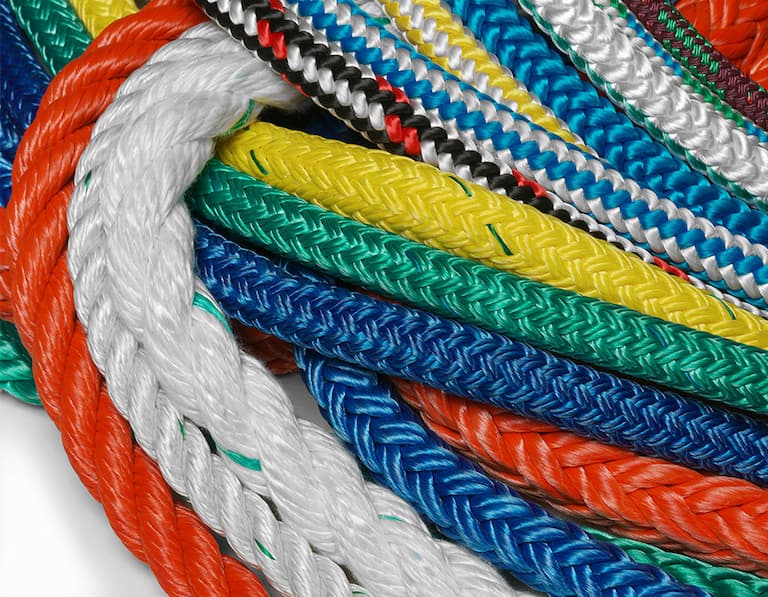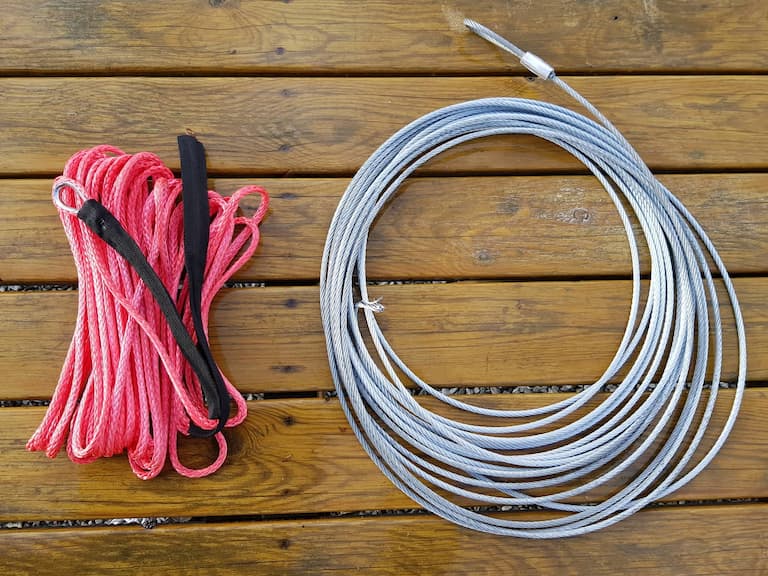Contents
If you regularly go off-roading, then you already know that sooner or later, every 4×4’er eventually finds themselves axle-deep in mud or immovably wedged between a not-so proverbial rock and a hard place. Winching is an unavoidable part of off-roading, which means you need to have quality winching gear with you at all times. It’s about more than just the winch itself, though: it’s about the ropes or cables you’re going to do the winching with.
If you think they’re both the same, then you need to think again; and it only takes one recovery attempt gone wrong to realise just how different they are. It’s not a difference that you want to take for granted, and taking the steps early to research the differences is going to be time well spent.
Safety First With Synthetic Ropes

As natural as it is to think that using the heaviest duty steel cable available is the surest means for getting your vehicle unstuck, it may not be. Steel cables have been the mainstay of power take-off (PTO) winches for decades, but with the increased use of high-performance synthetic winch cable ropes for towing and vehicle recovery, off-roaders now have a lighter, more versatile, and ultimately safer option at their disposal than they’ve ever had. With a tensile strength of 9,000kg, a 10mm section of 12-strand, ultra-high molecular weight polyethylene (UHMWPE) rope boasts nearly twice the loading force of a 3/8” (9.5mm) steel cable. And with synthetic winch ropes for sale in diameters up to 12.7mm and yielding tensile strengths up to 11,000kg, you’re not likely to find a heavier duty line to get unstuck with.
Assuming your vehicle’s GVM is within the limits of the steel cable that’s currently on your winch, there is still the question of how much more advantageous is a synthetic winch rope actually going to be when you’re trying to dislodge your vehicle. The answer is simple. When a steel winch cable catastrophically fails under load, a massive amount of kinetic energy is going to get released in a violent, whip-like recoil that could be every bit as lethal as it will be unpredictable. The same energy is also released when higher-strength synthetic winch ropes reach their breaking tension; the recoil, however, if any, won’t be with the ferocity of a shattered steel cable.
The peace of mind that comes from knowing you can safely recover your 4WD without worrying about dangerous steel cables is a convincing reason to buy winch rope, but there are other benefits as well. Synthetics continue to prove that they’re every bit as tough as steel in many cases, at just a fraction of the weight.
Synthetics are Better Than Steel
It’s easy to see how synthetic winch rope cable can become a viable replacement for traditional steel cable. As a composite that’s the basis for personal armour plating, a UHMWPE-based 4WD winch rope lists a host of characteristics that lend itself well to the gritty high performance of off-roading in ways that other polymers can’t, such as:
- Good UV and abrasion resistance;
- High resistance to elongation when stretched;
- Melt resistance to 150°C;
- Resistance to kinking or rotation when in use; and,
- Low water absorption and high buoyancy.
This last trait is especially valuable in a 4X4 winch rope, given the potential for using a winch to either cross a body of water, or to recover from getting stuck in one. Escorting a floating rope through chest-high water is a hundred times easier than dragging a steel cable across a muddy river bottom, and all you have to do when the recovery’s made is rinse it free of any mud or dirt, let it dry thoroughly, and pack it back inside its cover until you need it again.
Shedding Weight with Synthetic Rope

As useful as a synthetic winch rope may be at helping you recover your vehicle, it can even play a part in helping you avoid the recovery predicament altogether. Weight may not be the first thing you think about when you’re deciding whether a synthetic winch rope for sale is right for you, but take a moment to look at the numbers.
A 40m reel of 10mm rope winch cable only weighs 3kg, while 38m of 3/8” steel cable tips the scales at 12kg. If you’re concerned about how much weight you’re going off-roading with – and you should be – that’s 9kg that every 4X4 could easily afford to lose. Plus, without the heavy steel cable, you can also upgrade to a lightweight aluminium fairlead and save another 10kg.
Regardless of whether you’re into serious competition off-roading or just like kicking around the trails on the weekends, 19kg is a lot of weight, and shedding it from your front bumper is going to give you the benefits of:
- Increased ground clearance at the front end;
- A noticeably lighter front-end that’s easier to control; and,
- An equipment weight savings that also translates to a cost and weight savings in fuel.
The less weight you hit the trail with, the less likely you are to get stuck, and synthetic winch cables are going to give you immediate weight savings.
The Final Word
At the end of the day, it’s hard to overlook the advantages of switching to synthetic rope. And if the physics and the math aren’t enough to convince you, it’ll only take hauling a steel cable up a steep incline in ankle-deep mud a few times to realize that there has to be an easier way. A high-quality synthetic winch cable brings safety to the forefront while eliminating the headaches of reeling and winching heavy steel cables. And once you’ve made the switch from steel to synthetic, you won’t go back to steel ever again.

